My favorite Japanese teacher used to say, “Language is best learned by enjoying it.” And after years of learning Japanese, I have to agree. Having fun with a language solidifies understanding and joking around using a non-native tongue promotes mastery.
Whether you’re studying Japanese or English, Warau Eikaiwa jokes around in both Japanese and English. The result is a learning tool powerful beyond even the authors’ intentions.
The Funniest Study Tool?
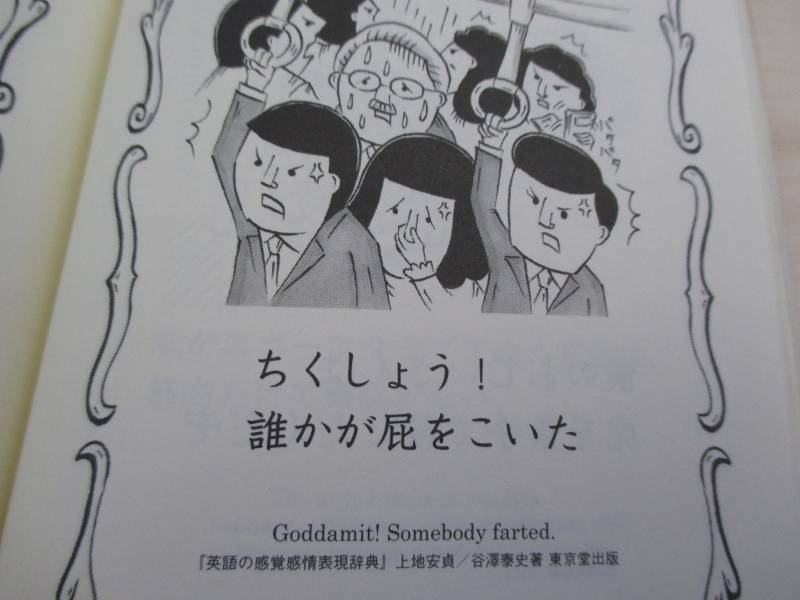
As the book jacket immodestly but accurately proclaims, “Warau‘s humor is felt strongly.” I dare you to keep a straight face while glancing through its comical single-panel cartoons and weird subject matter. I couldn’t help but laugh out loud as I leafed through the book.
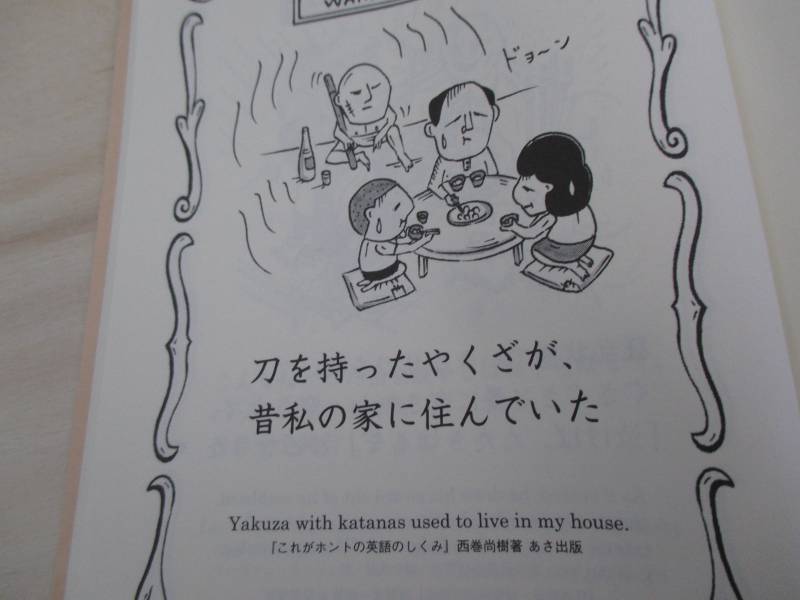
Warau‘s simple, silly artwork conveys the meaning of each equally silly, occasionally crude phrase. “She abuses me,” a man cries as a scarred, burly woman with a stick lords it over him. “Yakuza with katanas used to live at my house,” a family member declares as they eat dinner in the shadow of the criminal’s dark aura.

Each page features a humorous picture, a Japanese phrase, the English equivalent, and humorous authors’ commentary at the bottom. The authors even cite each phrase’s source material; from textbooks to advertising campaigns they cover an impressive array of influences.
The Sad, the Strange, and the Idiotic
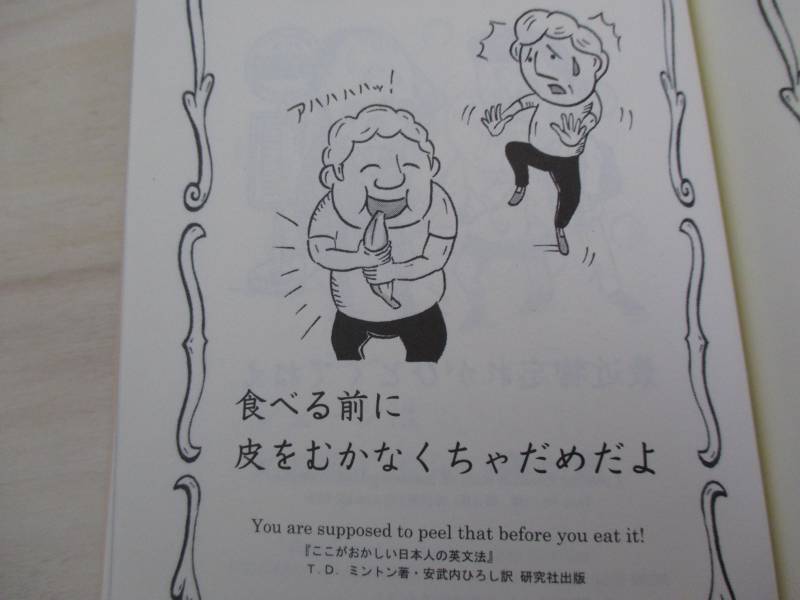
Warau Eigo is divided into five self-explanatory sections.
- Sad Conversations
- Conversations Between Boys and Girls
- Idiotic Conversations
- Strange Conversations
- Scary Conversations
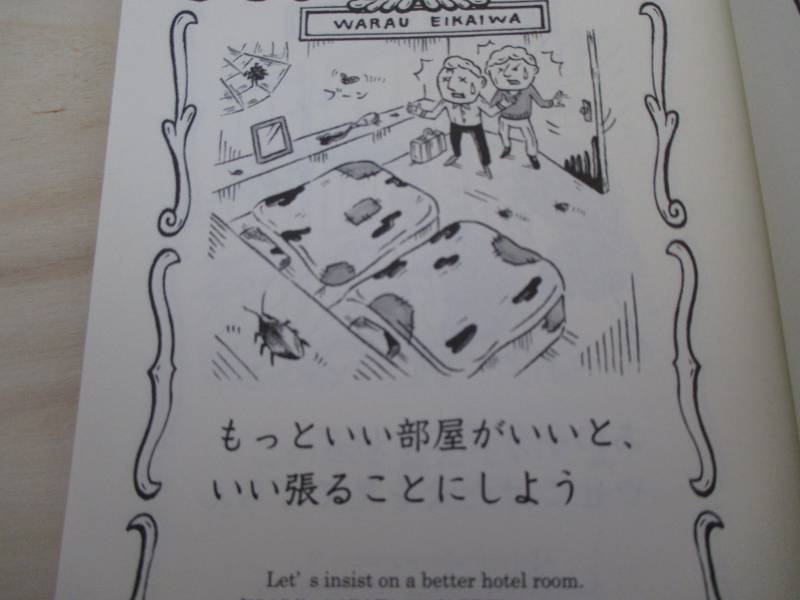
Okay, maybe they’re not so self-explanatory. How does an idiotic conversation differ from a strange conversation? It’s a gray line for sure. Most illustrations can be interchanged between the categories, Conversations Between Boys and Girls being the only section with a specific requirement. The entire book could have been titled Ridiculous Conversations.
Just Add Imagination and Elbow Grease!
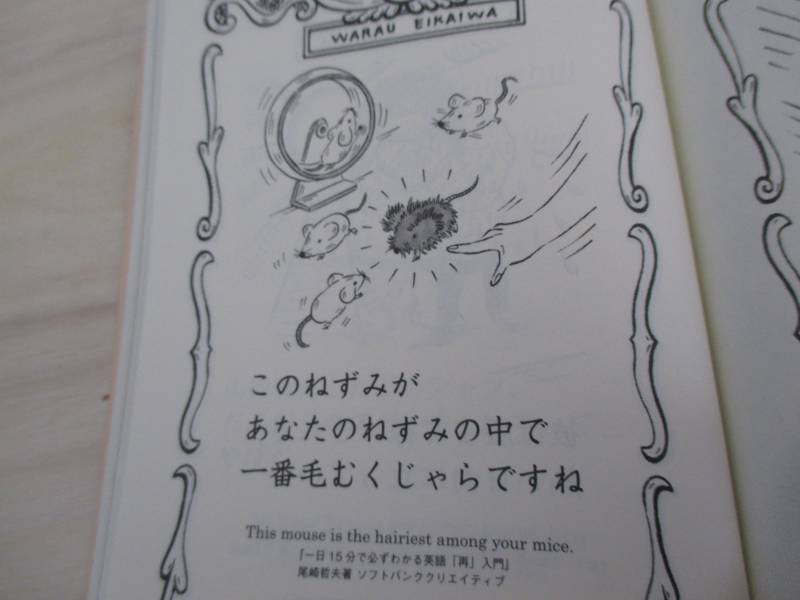
Since it’s not a textbook, Warau calls for some special strategies to use as a study tool. You might wonder, when can I use such phrases as “This mouse is the hairiest among your mice,” or “The man was seen to run away with a string of sausages from the butcher’s”?
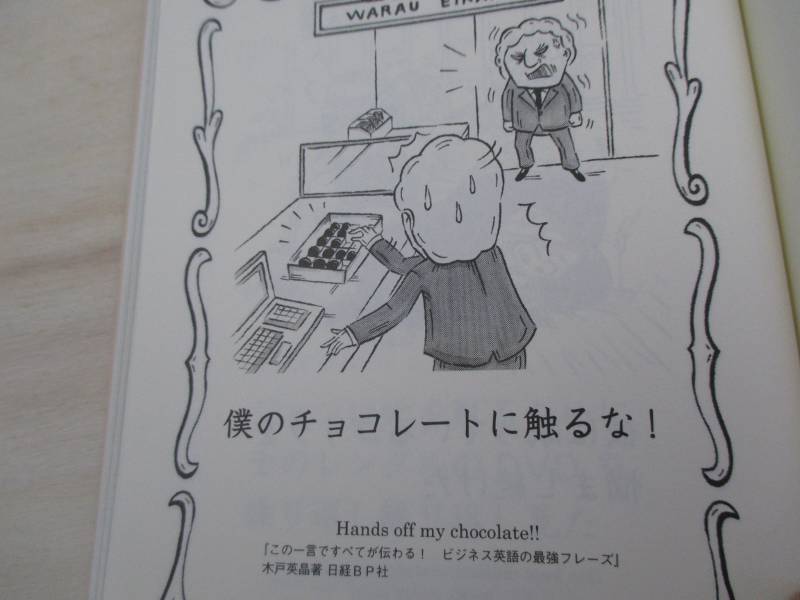
Some phrases are ready for immediate, everyday use with no modification.
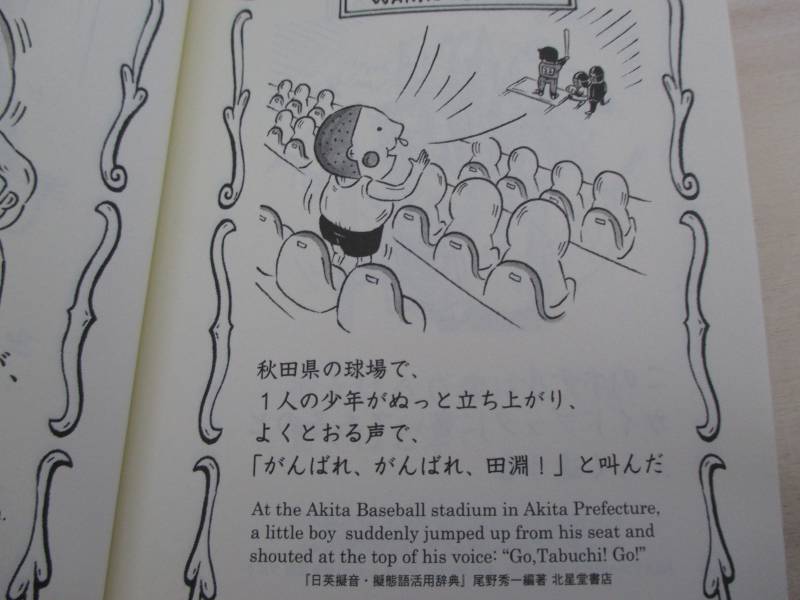
Others… no so much.
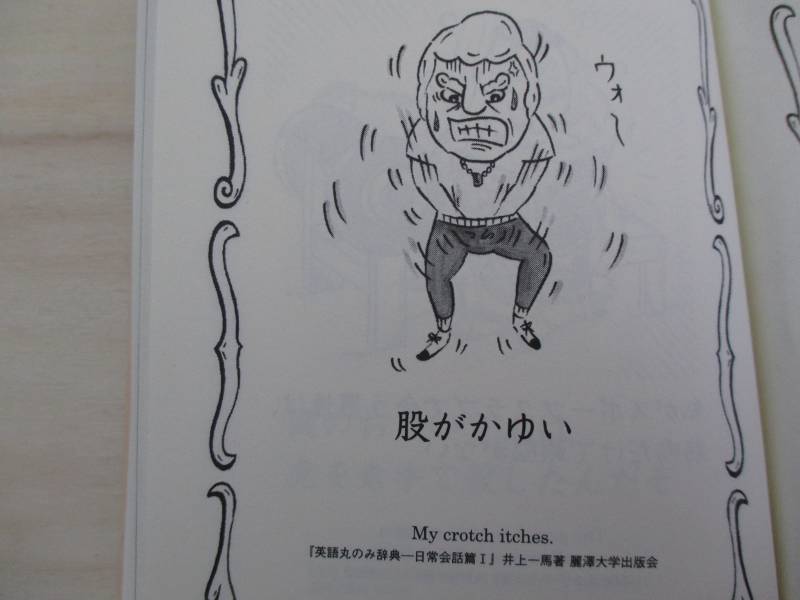
Yet with a little effort, even the most bizarre phrases reveal a useful grammar point. Sure you might never need to say, “This turtle is still alive,” but behind each silly phrases lies a real grammar point. Warau just makes it… interesting. And fun. And therefore memorable. For example take,
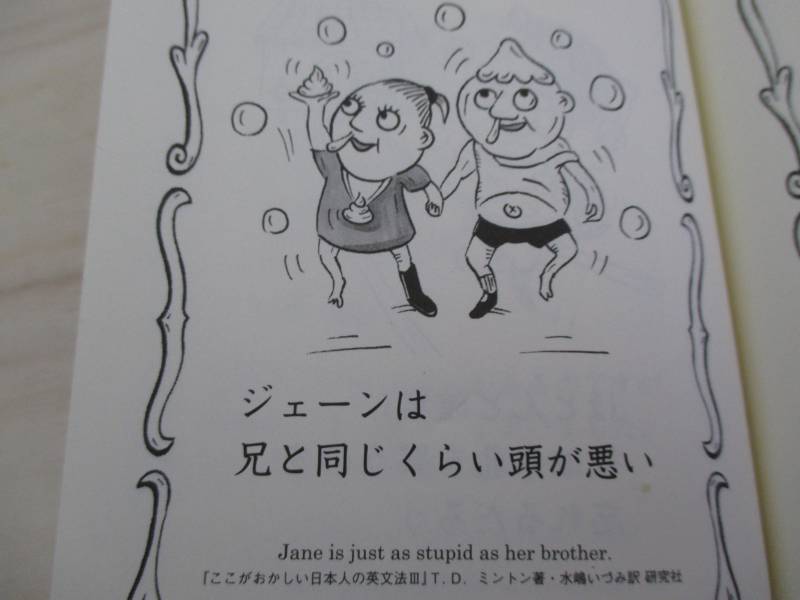
- ジェーンは兄と同じくらい頭が悪い。
- Jane is just as stupid as her brother.
Sure you might never want to say such a horrible thing (unless you’ve had a few drinks at a faculty party), but that doesn’t mean the sentence is useless. At the base of the phrase you find the grammar pattern:
- OBJECT Aは OBJECT Bと同じくらい ADJECTIVE (です)。
- OBJECT A is just as ADJECTIVE as OBJECT B.
As for that turtle…
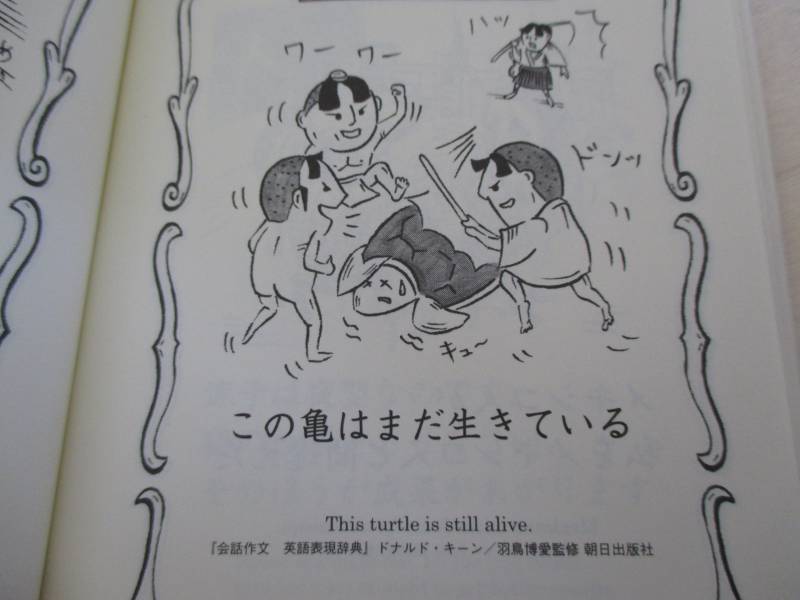
- この亀はまだ生きている。
- This turtle is still alive.
We find the present participle grammar pattern,
- このOBJECTはまだVERB(て-form)いる。
- This OBJECT is still VERB-ing.
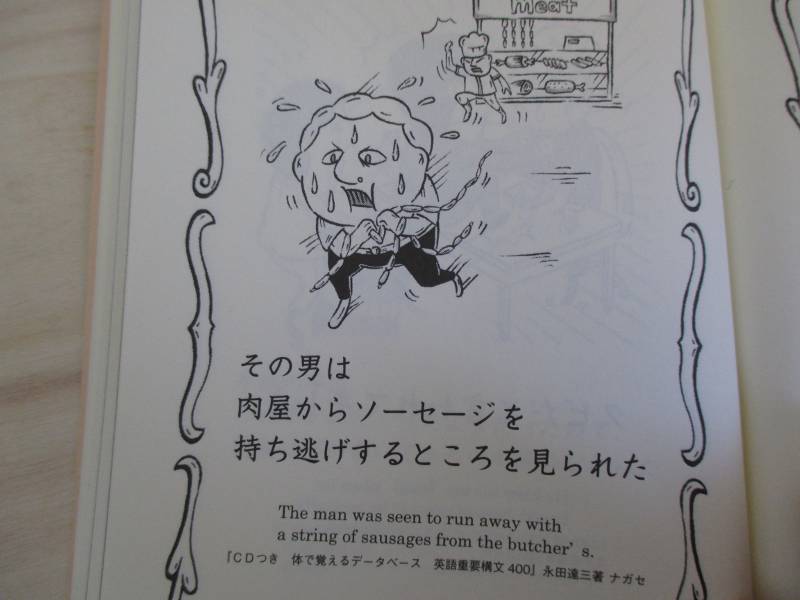
Although many language books rely on dull examples like, “Dick is just as smart as Jane” or “My brother is still watching TV,” Warau makes grammar funny and therefore fun. What’s more, the pictures add a wacky visual element that aids understanding.
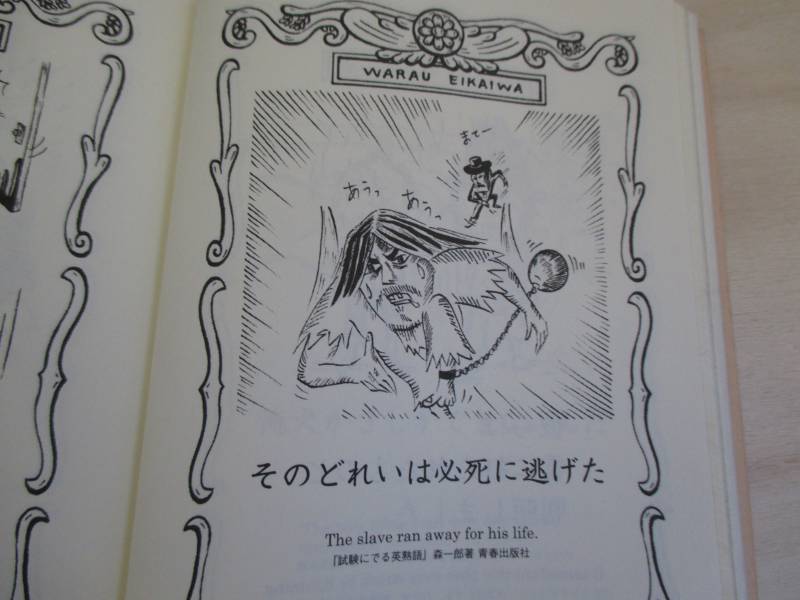
Like the Nihongo So-Matome grammar books, Warau doesn’t offer specific explanations. But, it does offer an illustration for EVERY phrase. And no matter how crazy the phrase may be, the pictures elucidate the intent and meaning.
Who Can Use Warau Eigo

Because it is aimed at native Japanese speakers who are studying English, Warau‘s use of kanji could intimidate beginners. It’s best suited for intermediate level students, offering a fun, rewarding challenge.
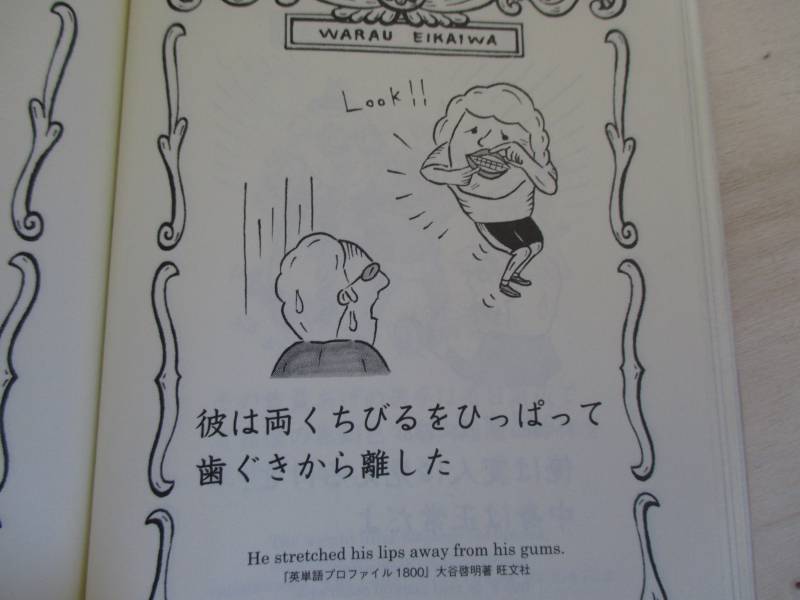
For those looking to tackle a few kanji at a time, Warau presents a Goldilocks-like balance. With a handful of kanji per phrase, Warau‘s use of kanji is just right. The lack of furigana means readers can’t take the easy way out, and you might want to keep a dictionary on hand.
You’ll Have a Warau Old Time!
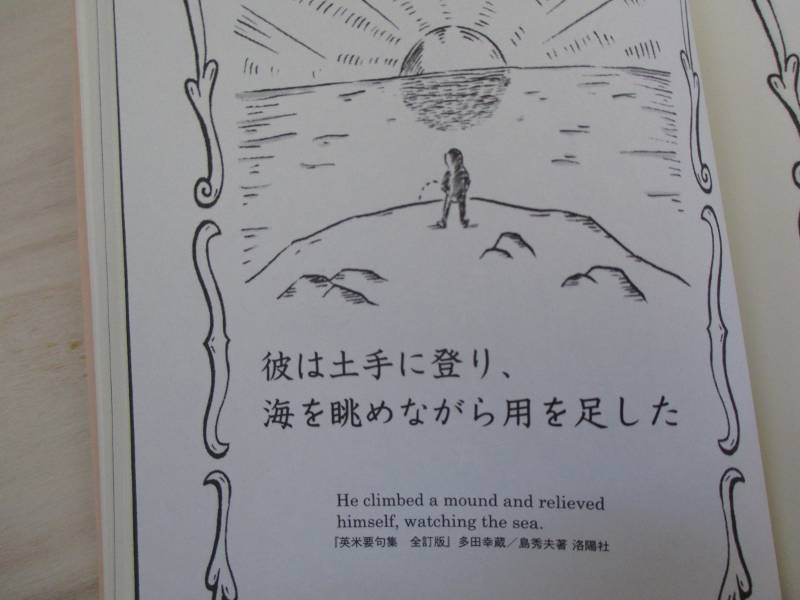
Some books CAN be judged by their covers. Warau Eikaiwa certainly falls under that category – this isn’t your usual Japanese learning resource.
Although intended for Japanese students of English, it’s just as effective for Japanese language learners. The extra effort needed to dissect Warau Eikaiwa‘s phrases makes for an engaging, enjoyable experience that inadvertently facilitates mastery of the material.
If you’re looking for a straightforward source of Japanese phrases, look elsewhere. Warau Eikaiwa doesn’t provide a structured textbook experience, but it never claims to. But if you’re looking for a memorable study tool with a lot of laughs pick up Warau Eikaiwa!
